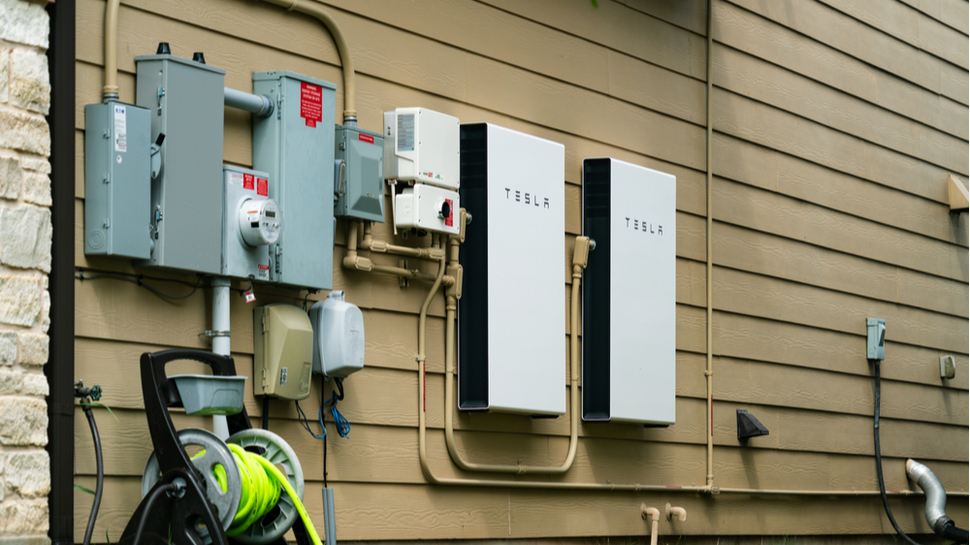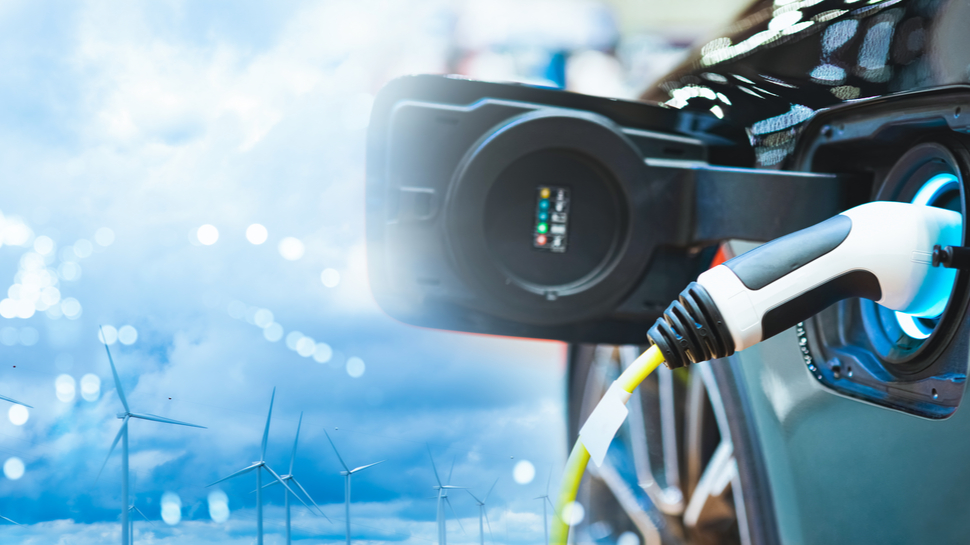You might not realize it, but much of our everyday life as we know it depends on the future of batteries. From juicing up your iPhone or laptop to powering your commute, batteries and charging devices give us the ability to enjoy the conveniences and joys of modern life - chances are, you’re reading this article on a battery-powered device.
We take the humble battery for granted and trust that our spare pack of AAAs will always be in the kitchen drawer, ready for use, and our Lightning cables waiting on the bedside table. But what if that wasn’t the case?
In recent years, battery technology has improved more rapidly than ever before and this could soon render old power systems obsolete. This is ultimately a positive change, because the technologies that exist today can only sustain us for so long.
If you haven’t been paying attention to new developments in the battery world, here are some of the latest technologies to watch - and why they matter.
Next-generation battery technologies
With our lives becoming increasingly intertwined with technology, it’s no surprise that researchers in both the public and private space have been working overtime to improve how we use batteries and power. Limitations in our current battery options also limit our advancements in technology, so we need new kinds of batteries to continue moving forward.
Gallium nitride (GaN) charging
Have you ever charged your smartphone or Mac and noticed that the charger felt hot? It’s a common issue and often signals the end of life for that charger.
These days could soon be in the past though, thanks to gallium nitride (GaN). GaN is a chemical compound used as a semiconductor that was first widely used in LED devices, but is now starting to feature in chargers as an alternative to silicon, with the first generation GaN devices hitting the market in 2018-2019.
Silicon has traditionally been used in chargers as a semiconductor, but we’re now starting to see more chargers using GaN instead, like the powerful (but pricey) Razer USB-C GAN charger.
This is because GaN has several advantages over silicon. Gallium nitride produces less heat and is capable of conducting higher voltages. This translates to pocket-sized devices that can charge faster, powering multiple devices at once without overheating - a win for anyone looking to free up desk space and save time.
GaN chargers can replace your larger laptop charger with something much more compact, but they are also used for phones, cameras, tablets, and anything you’d use with a USB.

High wattage and wireless charging
Your iPhone most likely came with a 5W, 18W, or 20W charger when you purchased it, depending on the specific model. This will get the job done, but slowly. Two convenient new battery developments are high wattage and wireless charging, letting you power up to 100% faster, without cables.
In contrast to the iPhone's slower charger, Samsung has released a powerful 45W wall charger for the Galaxy S22. Even more impressive, Xiaomi has outdone the bigger players with a 100W charger. With other phone manufacturers likely to follow suit, this means users can charge their devices quicker than ever before.
Many chargers are also ditching cables completely. Although wireless charge pads have been around for a few years, the technology is continuing to evolve, with Apple recently updating its MagSafe system, which uses magnets to charge the latest generation of iPhones, at an impressive 15W.
MagSafe refers to both the magnetic chargers used on MacBooks and the magnetic systems built into the iPhone 12 and beyond. With a series of magnets built into the phone around the charging coil, it’s easy to wirelessly charge. The MagSafe technology is only compatible with MagSafe chargers, meaning other magnets won’t accidentally stick to your phone.
Higher watts and wireless capabilities make it faster and simpler than ever to power our devices and free us up from our dependence on Lightning cables and power points.
Graphene batteries
Many in the tech world are eagerly watching the future of graphene batteries. Graphene is a form of carbon with two-dimensional properties, meaning it’s very thin and flat. It’s one of the most promising nanotechnology materials, consisting of a single layer of carbon arranged in a honeycomb lattice nanostructure. This gives graphene unique abilities, such as impressive thermal and electrical conductivity.
When graphene is used in a battery, it can offer faster charging at higher currents, while also helping batteries stay cooler and reducing the likelihood of overheating. The hope is that graphene will be used in both car batteries and electronics, giving our devices faster charge times and a longer battery life.
It’s imagined that graphene could replace lithium batteries in the future, but we’re not quite ready to roll out the red carpet. At the moment, the mass production costs of pure graphene batteries are too high to make them commercially viable.
This could soon change though, as Australian researchers have recently discovered a new form of graphene likely to be more cost-effective, with Tesla also rumored to be considering graphene for its electric vehicles (EVs).

Solid-state batteries
In contrast to lithium-ion batteries, which use a liquid electrolyte, solid-state batteries use a solid electrolyte. Solids are better at conducting electricity, so these batteries will offer faster charging and more power, which is extremely relevant when it comes to electric vehicles. They’re also denser and smaller.
With solid-state batteries, EVs will be able to travel longer distances without needing a charge, which will be a game-changer in the automotive market.
Solid-state batteries will also be safer, since they avoid some of the problems that lithium-ion faces. Lithium-ion contains flammable material, has a tendency to freeze, and is slow to charge, making it hard to power up your car quickly when you’re on a road trip, especially in harsh weather.
However, we’re not ready to revolutionize car technology quite yet, as solid-state battery technology still needs to be perfected. While it’s currently used for smaller electronics, like pacemakers and smart watches, solid-state technology isn’t ready for use in larger items like cars. This is due to development and production costs, along with the challenges of getting the balance right with the battery’s internal components so that it can be both stable and effective.
Car manufacturers are working non-stop on these issues though, with Toyota planning to release a hybrid vehicle powered with solid-state battery technology by 2025. This is driven by profit, of course, but also by necessity. With California and other states ordering an end to new gas car sales by 2035, car manufacturers need a reliable and affordable method for powering their vehicles going forward.
Battery replacements
In the future, some of our household devices could do away with batteries altogether. Samsung has come up with a clever way to do just this for its latest TV Eco Remote, which was solar-powered, but the latest version can also charge itself via your home’s Wi-Fi router.
The remote can convert radio waves emitted by your router into energy to power itself. This is known as RF harvesting and could be used for all sorts of low-energy devices, like AirTags. Samsung has previously estimated that its solar remotes could stop around 99 million batteries from being discarded over the next seven years, so the added convenience of radiofrequency charging could also have significant environmental benefits.
If more and more low-energy devices could do away with the need for disposable batteries, this could have a massive impact on our planet and could also save consumers money.
Solar is also to become more widely used to charge devices, as sustainable power can help us reduce our impact on traditional batteries. From outdoor Christmas lights to solar security cameras for the home, we’re increasingly using solar to power devices that used to be dependent on batteries.
Powerwalls
Battery innovation isn’t just about generating power—it’s also about storing the power after it’s been generated. Keeping a house running during power outages has long been a problem faced by homeowners, especially after a storm, with many turning to gas-powered generators in the past.
However, the new technology utilized by Tesla’s Powerwall makes it easier than ever for homes to store energy. A Powerwall is a home energy storage device that allows homeowners to store solar energy that they’ve generated and use it in the evenings or during outages. However, even if you don’t have solar, Powerwalls can store power generated through the electricity grid or a generator.

A Powerwall is similar to an electric car battery, so could battery-powered homes be in our future? It’s logical, since electricity demand is higher than ever before, leading to brownouts where homes lose their power supply. Powerwalls can also store electricity during periods of low demand, when costs are lower and deliver it when it’s higher, which could save homeowners money over time. However, the extremely high cost of Powerwalls means they are not yet feasible for many of us.
Nonetheless, with electricity costs expected to continue to rise, Powerwalls may be necessary to help us make the leap to a world powered by solar. If we can save solar energy and use it as needed, this will make solar panels much more effective and reduce, if not eliminate, household dependence on the power grid.
As Powerwall technology improves, larger Powerwalls are sure to develop, powering not only single-family homes but also apartment buildings and offices.
Renewable energy sources like solar and wind are alluring, and necessary to build a more environmentally-friendly world, but they still aren’t enough to handle all of our electricity needs. But, the Powerwall could change that, giving us a way to store and access sustainable energy on a large, commercial scale.
Why does new battery technology matter?
It’s clear that huge amounts of research and capital have been invested into new battery technology, but why? Are batteries really that important?
New types of batteries aren’t just being created for convenience, they’re actually a necessity if we want to keep enjoying life as we know it.
New batteries mean greater performance
New batteries mean new advances in our technological developments, which can currently only perform as best as their batteries allow. Newer and powerful processors, for example, demand huge amounts of power, but what if batteries weren’t holding us back? If battery life and power were no longer limitations we needed to worry about, technology could advance unlike ever before.
Batteries are essential to powering us into the future as a society, quite literally. With stronger, longer-lasting batteries, we can revolutionize how we use power in all aspects of life. We’ll see more efficient electronics, electric vehicles that can drive for days on one charge, improved capacity for medical equipment, and increased solar power production.
Imagine a medical clinic in a remote setting, for example. If medical devices could last for weeks on a battery charge, rather than days, this could be a literal lifesaver if the clinic lost power due to a natural disaster or emergency.
We’re quickly using up the earth’s natural resources
The lithium-ion battery market is valued at $46.4 billion. That translates to millions of batteries, but for each battery manufactured, one essential ingredient is needed: lithium. Lithium is a chemical element and a soft alkali metal. Most of the world’s lithium mines are in South America, but like many elements, lithium is a finite resource.
If we continue to depend on lithium-ion batteries, we will eventually run dry of the raw materials. Experts disagree on when this could happen, but some believe it could be as soon as 2040. Lithium is also considered a critical mineral by the United States Geological Survey, which means it’s a mineral of critical importance that’s facing potential supply issues. Being a critical mineral also means there’s no simple substitute, should we completely run out.
Yes, lithium can be recycled, but it usually isn’t; experts say that only around 5% of lithium-ion batteries from portable electronics are recycled. However, Tesla claims its battery packs are 100% recycled and saved from landfill, so we hope other EV manufacturers follow suit.
Just as the diminishing stock of fossil fuels is forcing us toward alternative transportation methods, like EVs, consideration of the planet’s limited lithium means we absolutely need to develop new battery technologies.

Reducing our environmental impact
Single-use batteries are a huge problem for the planet. With around three billion batteries thrown away each year in the US, most batteries aren’t recycled and end up in landfills, or in our public spaces, waterways and oceans.
When batteries aren’t disposed of properly, there’s a chance that the metals they contain, such as silver, cadmium, and lead, all materials known to cause health hazards to humans, will be released into the environment. This leads to increased toxicity, harmful to both wildlife and humans.
If we can develop new batteries that have a longer lifespan and reduced use of toxic materials, this can only be a good thing for the planet.
There’s also the environmental impact of the mining process associated with our current levels of lithium use. In Chile, one country rich in lithium, mining activities have led to soil contamination, environmental damage, and water depletion. It’s estimated that it takes two million liters of water to produce one ton of lithium and these water shortages have forced local communities in Chile to leave their traditional land and relocate elsewhere.
If we can develop more eco-friendly batteries, that will slow down some of these adverse effects. New types of batteries will also have a big impact on EVs, extending their range and hopefully decreasing their purchase price, leading to a reduction of our dependence on highly polluting fossil fuels.
New batteries, like the Powerwall, will also allow us to improve our usage of sustainable energy. Once it becomes easier to harvest and store solar power, we can ramp up our use of solar power even further and reduce our dependence on fossil fuels.
New batteries may be safer
If you’ve flown on a plane, you’ve probably been asked if you’re carrying spare lithium-ion batteries. These battery types are required to be stored in your carry on luggage, rather than checked, for safety purposes. This is because lithium-ion can overheat, short-circuit, and even cause fires.
The Federal Aviation Administration (FAA) has recorded 350 incidents with lithium batteries since 2006, so it’s clear this is a serious issue for airlines. While lithium batteries are generally safe, they can overheat or ignite if stored incorrectly, used with the wrong types of charger, or if overcharged.
We need batteries that are more stable, not just for aviation but also for general use. New battery types, like solid-state, will be more stable than lithium, making it safer to use and transport electronic devices and reducing the risk of explosion or fire.
Improved efficiency and convenience
There’s never enough time in the day, but time never seems to pass more slowly than when you’re waiting for your phone to charge. But with new battery technology, the days of waiting hours for a full charge could be gone.
New battery technology will bring convenience and increased productivity to our lives since faster, more powerful batteries will let us charge faster, and likely give a charge that will last longer than ever before.
The next generation of technologies, such as GaN chargers, will also be smaller and able to charge multiple devices at the same time. A smaller, more portable battery will save space too.

What are the risks of new battery technologies?
Any new technology development brings along plenty of challenges and batteries are no exception. There are several stumbling blocks that battery developers need to overcome before all of the new battery technologies discussed above can become mainstream.
Development cost
The financial cost of developing new technology is huge, with new batteries requiring years of testing, prototypes, and trial and error. New batteries don’t spring up overnight; going from the invention stage to being able to mass produce on a global scale can take years.
When developing new batteries, it takes lots of time and money to figure out which chemical compounds work best, and are safest. Not all companies have the capital or the interest in working to develop new batteries, especially when it may take decades before seeing any returns.
While Tesla has been known to sell vehicles at a loss, with profits coming from selling regulatory credits rather than directly from EV sales, most businesses aren’t in a position to operate this way, which makes it harder for new technologies to be developed.
One solution to this is increased government support for battery developments. If more resources were allocated to subsidies and tax breaks for companies developing new batteries, we could advance much faster.
Consumer price point
How much would you pay for a faster phone charger? One issue with new batteries is higher production and materials costs, which translates to a higher consumer price point.
Gaming brand Razer, for example, has released a 130W GaN charger for $180. While this will appeal to some, high-priced chargers aren’t likely to become mainstream when consumers can get a similar product for a fraction of the price.
Newer battery technologies aren’t likely to replace lithium-ion or alkaline batteries until they can be offered at similar price points. Consumer tax breaks could be one way to help lower the cost and most new technologies drop in price over time, but battery manufacturers will need to create affordable products to achieve critical mass.
Similar to the federal tax credit for solar installation, more tax breaks for installing Powerwalls or expanding the tax credit program for electric vehicles would incentivize consumers to purchase, even if the initial purchase price was high.
Consumer behavior
Consumer behavior takes time to change, with many probably reluctant to purchase a new type of battery or vehicle when they’re content with their current options. Public education can help with this, but both governments and corporations should have a moral obligation to spread the word about the environmental impact caused by our current battery use, thereby helping consumers understand why changes are needed.
The future of batteries is an exciting one, with new technology on the horizon that will make a huge impact. Yes, new batteries will offer us convenience, making it easier to work remotely, travel and multitask, but more importantly, new batteries will help our planet. While there is still more work to be done before graphene, GaN, and solid-state batteries become commonplace, many are eagerly watching this space and it’s fascinating to imagine how our world might look different in just a few years, all thanks to batteries.
- Also check out our list of the best portable laptop chargers around
from TechRadar - All the latest technology news https://ift.tt/OxTpHdE




0 Comments